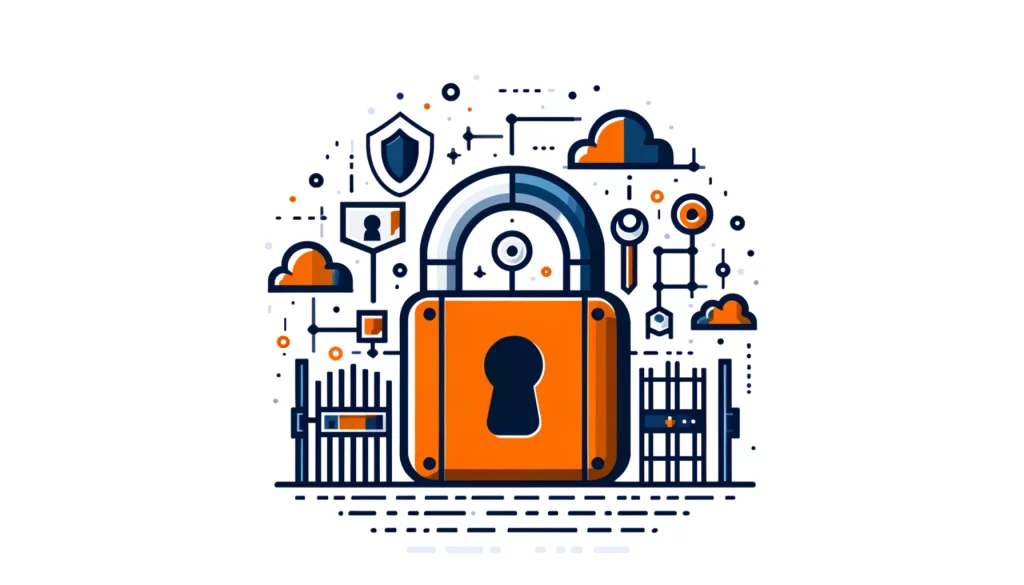
Access Control Policy

If companies don’t have good security, they could lose data, money, and their good name. Access control policy serves as the first line of defense in safeguarding your company’s valuable data assets.
Overview
Access control policies are a set of rules, guidelines, and restrictions that define who can access your organization’s data, when they can do so, and to what extent.
The policies are made to ensure only authorized individuals can access sensitive information. This helps decrease the risk of data breaches and unauthorized entry.
Organizations can protect their data and follow industry rules by using clear access control policies.
The Importance of Applying Access Control Policy Across the Organization
Access control policies should be applied consistently across all levels of the organization, encompassing data consumers, data producers, and other stakeholders.
This includes people like employees, partners, contractors, and interns who need access to certain data to do their jobs well.
Organizations can prevent data misuse or compromise by carefully controlling access. This means ensuring that individuals do not receive excessive privileges. This approach helps maintain security and protect sensitive information. Giving too many privileges can lead to potential risks and weaknesses.
The Benefits of Implementing
Implementing robust access control policies offers several key benefits to organizations.
These policies ensure that we comply with regulations such as GDPR, HIPAA, and PCI-DSS. These regulations require us to handle sensitive data with great care.
By adhering to these regulations, companies can avoid costly fines and legal repercussions.
Secondly, access control policies significantly reduce security risks by defining restrictions based on a thorough risk assessment of business value and impact.
Organizations can lower the risk of data breaches by evaluating the impact of unauthorized access and implementing appropriate security measures. This will reduce the damage from successful attacks. This can help minimize the harm of successful attacks.
Having clear access control policies can help pinpoint the reasons behind security incidents or data breaches.
Clear standards across the organization make it easier to pinpoint the source of security issues and promptly address them.
Types of Access Control Policies
Access control policies can be broadly categorized into three main types: administrative, physical, and technical (or logical) policies.
Administrative policies focus on establishing the overall framework and guidelines for access control within the organization. They encompass a combination of physical and technical policies, ensuring a cohesive and comprehensive approach to data security.
Physical access control policies limit access to certain areas in the office.
Security measures prevent unauthorized access to sensitive areas. These measures include key card systems, biometric scanners, and security personnel.
Technical, or logical, access control policies specifically address the rules and restrictions governing access to company data, systems, and information storage components.
There are four types of policies for controlling access: mandatory, discretionary, role-based, and rule-based.
Mandatory Access Control: The Strictest Approach
Mandatory access control is the most restrictive form of access control policy. In MAC, system administrators or security officers decide who can access data by setting rules and regulations.
Users have no control over the access rights assigned to them, and the policies are enforced by the system itself. This approach is commonly used in high-security environments, such as military or government organizations, where data confidentiality is of utmost importance.
Discretionary Access Control: Empowering Data Owners
DAC policies allow data owners to control who can access their data and the level of access they have. Data owners have the authority to decide who can access their data. They can also determine the extent of access granted to individuals.
Under DAC, the data owner has complete control over the access rights and can grant or revoke permissions as they see fit. This approach is more flexible than MAC but relies heavily on the judgment and discretion of the data owners.
Role-Based Access Control: Streamlining Access Management
Role-based access control (RBAC) policies define access rights based on one’s role within the organization.
Under RBAC, permissions are associated with specific job functions rather than individual users. This method simplifies controlling access by easily granting or revoking access based on an employee’s job. It helps to keep things organized and reduces the amount of work needed to manage access.
Rule-Based Access Control: Flexible and Dynamic
Rule-based access control (RuBAC) policies are different from role-based access control. They add more flexibility by setting rules for access based on business processes and infrastructure needs.
RuBAC policies can take into account various factors, such as time of day, location, or the sensitivity of the data being accessed, to determine whether access should be granted.
Policy-Based Access Control: Combining Roles and Policies
Policy-based access control (PBAC) is a mix of role-based access control and specific business rules.
Under PBAC, access rights are determined by both an individual’s role and the policies associated with that role. This approach allows for more granular control over access rights, taking into account both job functions and specific business requirements.
Access Control Policy and Data Security
Access control policies play a vital role in ensuring the security of a company’s data. Companies can reduce the risk of data loss by limiting access to sensitive information.
This can also prevent exposure or misuse of data. Clear policies and standards should be in place to regulate access to sensitive information. This will help protect the company’s data and prevent security breaches.
Collaboration is important for security teams, data governance teams, and data services teams. They should create access control policies that are clear, thorough, and aligned with the company’s security goals.
Regular Review and Updates
It’s important for organizations to regularly review and update access control policies as they grow and new technologies come out.
This involves reassessing the risk landscape, identifying new threats and weaknesses, and adapting policies to address these changes.
It is important to regularly conduct audits and assessments to ensure that access control policies are being correctly followed. Any issues or violations should be addressed promptly.
Also, when employees start, leave, or switch jobs in the company, access rules need to be changed to match these updates.
This ensures that individuals can only access the necessary information and tools for their current job. This reduces the risk of unauthorized access due to outdated or unnecessary permissions.
Access Control Standards
Companies should follow industry-wide access control standards in addition to their own rules for who can access information.
These standards offer a structure for implementing strong access control measures and ensuring that an organization’s policies are thorough and successful.
Some widely recognized access control standards include:
– ISO/IEC 27001: Information Security Management Systems
– NIST SP 800-53: Security and Privacy Controls for Federal Information Systems and Organizations
– COBIT: Control Objectives for Information and Related Technologies
– PCI DSS: Payment Card Industry Data Security Standard
By aligning access control policies with these standards, organizations can demonstrate their commitment to data security and comply with relevant industry regulations.
The Future of Access Control: Emerging Trends and Technologies
As technology changes, access control rules and tools need to change too to keep up with new challenges and opportunities. Some of the emerging trends and technologies that are shaping the future of access control include:
- Zero Trust Architecture: Zero trust architectures move away from the traditional perimeter-based security model. They do not inherently trust any user or device, and require continuous verification and validation of access requests.
- AI and ML technologies can analyze user behavior, detect unusual patterns, and adjust access control rules based on risk levels. These technologies can help organizations understand how users interact with their systems. They can also identify potential security threats and automatically adjust access permissions to mitigate risks.
- Biometric Authentication: The use of biometric data, such as fingerprints, facial recognition, and iris scans, can provide a more secure and convenient method of user authentication, reducing the reliance on passwords and other traditional methods.
- Blockchain-Based Access Control: Decentralized systems that use blockchain technology can provide better security, transparency, and tracking of data access. This allows for safe sharing of information among different groups without needing a central authority.
By staying abreast of these emerging trends and technologies, organizations can future-proof their access control policies and ensure that they remain effective in the face of evolving threats and requirements.
Conclusion
Access control policies are important for an organization’s security strategy in the digital age. These policies help protect data and guide decision-making. They are a key component of security measures. Access control policies are crucial for ensuring data security.
Companies can protect their valuable data assets by implementing access control policies. This can also help reduce the risk of breaches. Additionally, it can help maintain trust with customers and stakeholders. The policies should be clear, thorough, and enforceable.
Organizations need to stay ahead of the changing threat landscape and stricter regulations by being proactive with access control.
It is important to regularly review and update access control policies for security. Investing in tools and technologies to enforce these policies is also crucial. Promoting a culture of security awareness among all employees in the organization is essential.
By embracing access control policies as a fundamental aspect of their data security framework, organizations can confidently navigate the challenges of the digital age and unlock the full potential of their data-driven initiatives.
Data is becoming increasingly valuable in today’s world. The ability to control and secure access to data will be crucial for organizations to succeed. This will determine which organizations thrive and which ones fall behind.
